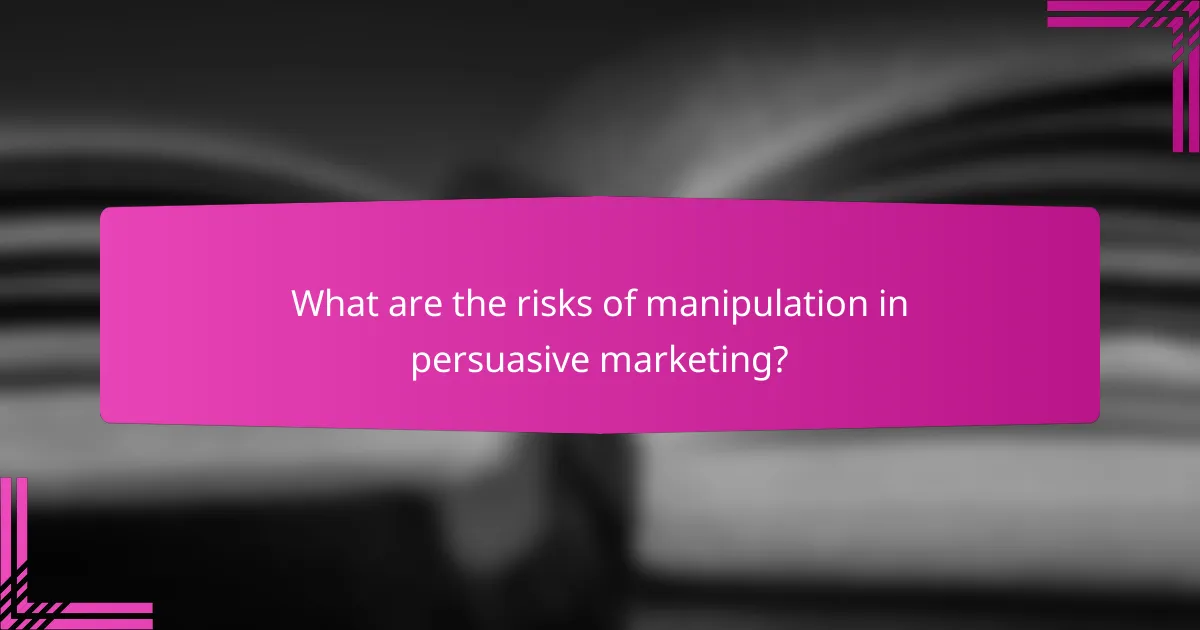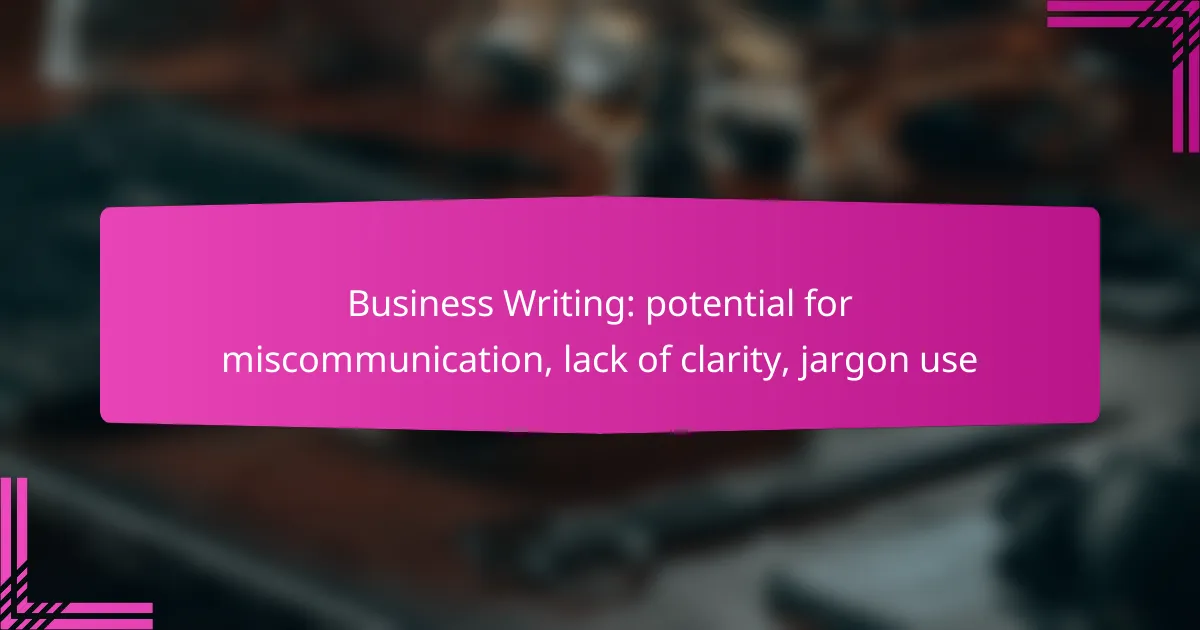In the realm of persuasive communication, ethical considerations are paramount to avoid manipulation and alienation of the audience. Misleading tactics and insincerity can erode trust, ultimately harming brand perception and customer loyalty. By prioritizing transparency and genuine engagement, communicators can effectively convey their messages while respecting their audience’s intelligence and values.

How can persuasive style be used ethically in Australia?
Ethical use of persuasive style in Australia involves clear communication, respect for the audience, and a focus on genuine value. By prioritizing transparency and audience engagement, communicators can foster trust while effectively conveying their messages.
Transparent messaging
Transparent messaging is crucial for ethical persuasion. This means being honest about intentions, avoiding misleading claims, and clearly disclosing any potential conflicts of interest. For example, if a company promotes a product, they should openly share any affiliations or sponsorships that may influence their message.
In Australia, adhering to the Australian Consumer Law is essential, as it mandates that businesses provide truthful information. Failure to comply can lead to penalties and damage to reputation.
Audience engagement
Engaging the audience ethically requires understanding their needs and perspectives. This involves actively listening to feedback and adapting messages accordingly. For instance, conducting surveys or focus groups can help identify what resonates with the audience, allowing for more tailored communication.
Moreover, fostering a two-way dialogue encourages trust and loyalty. Brands that respond to customer inquiries and concerns demonstrate that they value their audience, which can enhance the effectiveness of their persuasive efforts.
Value-driven content
Value-driven content focuses on providing genuine benefits to the audience rather than solely promoting a product or service. This can include educational resources, helpful tips, or insights that align with the audience’s interests. For example, a financial institution might share budgeting advice alongside its banking services.
Creating content that prioritizes the audience’s needs not only enhances credibility but also encourages long-term relationships. Ethical persuasion thrives when the audience feels they are receiving valuable information rather than being manipulated for profit.

What are the risks of manipulation in persuasive marketing?
The risks of manipulation in persuasive marketing include misleading information, exaggerated claims, and ethical concerns that can alienate audiences. These tactics can damage trust and lead to negative perceptions of a brand, ultimately affecting customer loyalty and sales.
Misleading claims
Misleading claims occur when marketers present information that is not entirely accurate or is taken out of context. For example, a product might be advertised as “clinically proven” without disclosing that the study was conducted under very specific conditions that do not reflect real-world use.
To avoid misleading claims, marketers should ensure that all statements are substantiated by reliable evidence. Transparency is key; providing clear disclaimers or context can help maintain credibility with the audience.
Exaggerated benefits
Exaggerated benefits involve overstating the advantages of a product or service, leading consumers to have unrealistic expectations. For instance, a weight loss supplement might claim to help users lose “up to 10 pounds in a week,” which can mislead customers into thinking results are guaranteed.
Marketers should focus on presenting realistic outcomes and avoid hyperbolic language. Using testimonials or case studies that reflect typical results can help set appropriate expectations and build trust with potential customers.

How can persuasive techniques alienate an audience?
Persuasive techniques can alienate an audience when they come across as manipulative or insincere. This can lead to a loss of trust and engagement, making the audience feel disconnected from the message being conveyed.
Overly aggressive tactics
Using overly aggressive tactics can push an audience away rather than draw them in. Techniques such as high-pressure sales pitches or fear-based messaging can create discomfort and resistance, leading individuals to disengage from the conversation.
For example, a marketing campaign that emphasizes dire consequences for not purchasing a product may initially grab attention but can ultimately result in negative feelings towards the brand. It’s crucial to balance urgency with respect for the audience’s autonomy.
Lack of authenticity
A lack of authenticity in persuasive communication can significantly alienate an audience. When messages feel insincere or overly polished, individuals may question the motives behind them, leading to skepticism.
For instance, if a public figure promotes a product they do not genuinely use or believe in, audiences can sense this disconnection. To maintain credibility, it’s essential to communicate transparently and align messages with genuine values and experiences.

What ethical concerns arise from persuasive marketing?
Persuasive marketing can lead to significant ethical concerns, particularly regarding manipulation and the potential alienation of audiences. Marketers must navigate the fine line between persuasion and coercion, ensuring their strategies do not exploit consumer vulnerabilities.
Consumer trust erosion
When persuasive marketing tactics cross ethical boundaries, they can erode consumer trust. If customers feel manipulated or deceived, they may become skeptical of brands, leading to long-term damage to relationships. For example, misleading advertisements can result in negative perceptions that linger even after corrective measures are taken.
To maintain trust, brands should prioritize transparency and honesty in their messaging. Clear communication about product benefits and limitations fosters a more trustworthy relationship with consumers, encouraging loyalty over time.
Regulatory compliance issues
Persuasive marketing strategies must comply with various regulations to avoid legal repercussions. In many regions, including the EU and the US, there are strict guidelines governing advertising practices, particularly concerning misleading claims and consumer protection. Failing to adhere to these regulations can lead to fines and reputational harm.
Marketers should stay informed about relevant laws, such as the Federal Trade Commission (FTC) guidelines in the US or the General Data Protection Regulation (GDPR) in the EU. Regular training and audits can help ensure compliance and mitigate risks associated with unethical marketing practices.

How to balance persuasion and ethics?
Balancing persuasion and ethics involves using techniques that influence without manipulating or alienating your audience. It requires a commitment to transparency, respect, and a focus on the audience’s best interests.
Establish clear guidelines
Creating clear guidelines for persuasive communication helps maintain ethical standards. These guidelines should outline acceptable practices, including honesty in messaging and respect for audience autonomy.
Consider developing a checklist that includes points like avoiding misleading claims, ensuring data accuracy, and respecting privacy. Regularly review and update these guidelines to adapt to changing societal norms and expectations.
Regular audience feedback
Gathering regular feedback from your audience is essential for ethical persuasion. This feedback can help identify any feelings of alienation or manipulation, allowing you to adjust your approach accordingly.
Utilize surveys, focus groups, or social media polls to gauge audience reactions and perceptions. Aim for a mix of qualitative and quantitative data to get a comprehensive view of how your persuasive strategies are being received.

What are the best practices for ethical persuasion?
Ethical persuasion involves using honest methods to influence others while respecting their autonomy and values. Best practices include utilizing honest testimonials and inclusive messaging to build trust and foster genuine connections with your audience.
Honest testimonials
Honest testimonials are genuine endorsements from real customers that reflect their true experiences. They should be specific and relatable, providing potential customers with insights into how a product or service has positively impacted others.
When gathering testimonials, ensure that they are voluntary and not coerced. Avoid exaggeration or manipulation of the feedback, as this can lead to distrust and damage your credibility. Aim for a diverse range of testimonials to represent various perspectives.
Inclusive messaging
Inclusive messaging means crafting communication that resonates with a diverse audience, acknowledging different backgrounds, experiences, and needs. This approach fosters a sense of belonging and encourages engagement from a broader demographic.
To implement inclusive messaging, use language that is respectful and avoids stereotypes. Consider the cultural context of your audience and strive to represent various identities in your marketing materials. Regularly seek feedback to ensure your messaging remains relevant and welcoming.

How does persuasive style impact brand reputation?
A persuasive style can significantly enhance or damage brand reputation depending on its execution. Effective persuasion fosters positive connections with the audience, while manipulative tactics can lead to distrust and alienation.
Positive brand perception
When brands use persuasive techniques ethically, they can create a strong, positive perception among consumers. This can involve appealing to emotions, highlighting benefits, and establishing trust through transparency. For example, brands that share authentic stories about their products often resonate well with audiences, leading to increased loyalty and advocacy.
Clear and honest communication can also enhance credibility. Brands that consistently deliver on their promises and engage with customers meaningfully are likely to enjoy a favorable reputation. This approach can result in higher customer retention rates and positive word-of-mouth referrals.
Risk of backlash
Conversely, a persuasive style that borders on manipulation can provoke backlash from consumers. If audiences feel deceived or coerced, they may respond negatively, leading to a damaged reputation. For instance, misleading advertising claims can result in public outrage and loss of trust, which can be difficult to rebuild.
To mitigate this risk, brands should prioritize ethical persuasion techniques. Avoiding hyperbolic claims and ensuring that messaging aligns with actual product performance can help maintain consumer trust. Regularly soliciting feedback and being responsive to concerns can also prevent potential alienation and foster a more positive brand image.

What are emerging trends in ethical persuasion?
Emerging trends in ethical persuasion focus on transparency, respect for audience autonomy, and the responsible use of data. These trends aim to foster trust and engagement while minimizing the risk of manipulation and alienation.
Data-driven personalization
Data-driven personalization tailors messages to individual preferences and behaviors, enhancing relevance and engagement. By analyzing user data, organizations can create targeted content that resonates with specific audience segments.
However, it is crucial to balance personalization with ethical considerations. Over-reliance on data can lead to privacy concerns and feelings of manipulation among users. Always ensure compliance with data protection regulations like GDPR in Europe or CCPA in California.
To implement effective data-driven personalization, consider these steps: collect data responsibly, segment your audience, and continuously test and refine your messaging. Avoid excessive targeting that may alienate users, and provide clear opt-out options to maintain trust.



